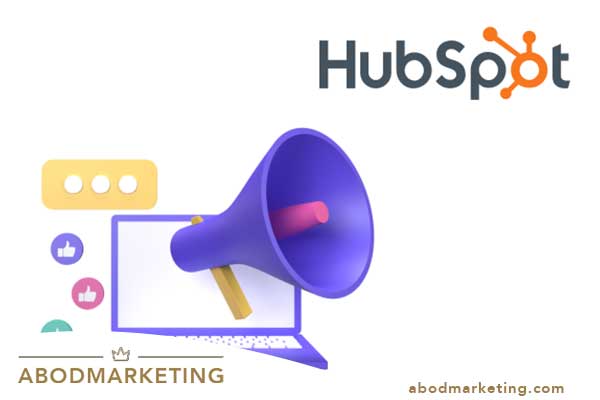Targeted digital ads
Targeted Digital Ads: Maximizing Your Marketing Impact
In today’s fast-paced digital landscape, traditional advertising methods are taking a backseat as businesses embrace the power of targeted digital ads. These ads have revolutionized the way brands connect with their audience, offering precision, engagement, and efficiency like never before.
If you’re looking to elevate your marketing game and reach the right people at the right time, targeted digital ads are the game-changer you need. In this article, we’ll delve into the world of targeted digital ads, exploring their benefits, strategies, and how they can propel your business towards success.
Introduction
In an era where individuals are constantly bombarded with information, it’s imperative for businesses to stand out from the noise. This is where targeted digital ads come into play. These ads are strategically designed to reach a specific group of individuals who are more likely to be interested in your products or services. Gone are the days of casting a wide net and hoping for the best. Targeted ads allow you to refine your focus, ensuring that your marketing efforts are not only impactful but also efficient.
Understanding Targeted Digital Ads
Defining Targeted Ads
Targeted digital ads, often referred to as personalized ads, leverage data-driven insights to tailor advertisements to the preferences, behaviors, and characteristics of a specific audience segment. This customization enhances the relevancy of the ad, increasing the likelihood of engagement and conversion.
How Do They Work?
Targeted ads rely on a combination of user data, such as browsing history, online purchases, and demographic information, to create a detailed profile of the audience. This data is then used to deliver ads that resonate with the audience’s interests and needs. For instance, if a user frequently searches for fitness-related content, they might receive targeted ads for athletic apparel or fitness equipment.
The Benefits of Targeted Digital Ads
Laser-Focused Audience Reach
One of the primary advantages of targeted ads is the ability to pinpoint your audience with remarkable precision. By tailoring your ads to specific demographics, behaviors, and interests, you ensure that your message reaches those who are most likely to convert, eliminating wasted impressions.
Improved Engagement Rates
Generic ads often fail to capture attention, but targeted ads have a different story to tell. When users see content that resonates with their needs and preferences, they’re more likely to engage, whether it’s through clicking, liking, sharing, or making a purchase.
Cost-Effectiveness
Traditional advertising methods can be expensive, especially if you’re reaching a broad audience. Targeted ads, on the other hand, allow you to allocate your budget wisely by investing in the audience segments that matter most. This cost-effectiveness maximizes your return on investment (ROI).
Crafting Effective Targeted Ads
Audience Segmentation
Understanding your audience is the first step towards creating effective targeted ads. Segment your audience based on factors such as age, gender, location, interests, and purchase history. This segmentation lays the foundation for personalized content.
Compelling Ad Copy
The words you choose matter. Craft compelling ad copy that speaks directly to the pain points and desires of your audience. Address their needs and highlight the value your product or service brings to the table.
Captivating Visuals
In the world of digital ads, visuals play a crucial role in capturing attention. Use eye-catching imagery or videos that resonate with your audience’s preferences. Visuals should complement your ad copy and convey your brand’s message effectively.
Platforms for Targeted Ads
Social Media Advertising
Social media platforms offer robust tools for targeted advertising. Platforms like Facebook, Instagram, and LinkedIn allow you to define your audience based on demographics, interests, and behaviors. This precision ensures that your ad reaches users who are genuinely interested in what you offer.
Search Engine Advertising
Search engines like Google offer targeted advertising through search ads. These ads appear when users search for keywords related to your business. By bidding on specific keywords, you ensure that your ad appears prominently in search results.
Display Advertising
Display ads are graphical ads that appear on websites, apps, and social media platforms. They can be targeted based on user behavior, interests, and demographics, making them a powerful tool for reaching potential customers.
Data Privacy and Ethics
Ensuring User Consent
While targeted ads offer numerous benefits, it’s crucial to respect user privacy and gain their consent for data collection. Transparently communicate your data usage practices and allow users to opt out if they choose.
Ad Personalization vs. Intrusion
There’s a fine line between personalization and intrusion. Strive to create ads that enhance the user experience rather than disrupt it. Respect user preferences and avoid crossing boundaries that might lead to negative perceptions.
Measuring Success
Key Metrics to Track
To gauge the effectiveness of your targeted ads, monitor key metrics such as click-through rates (CTR), conversion rates, engagement rates, and return on ad spend (ROAS). These metrics provide insights into the performance of your campaigns.
A/B Testing
A/B testing involves creating multiple versions of an ad and testing them against each other to identify the most effective elements. Experiment with different ad copies, visuals, and calls to action to optimize your campaigns over time.
The Future of Targeted Ads
AI and Automation
Artificial intelligence and automation are poised to revolutionize targeted advertising further. AI algorithms can analyze vast amounts of data to refine audience targeting and ad personalization, resulting in even more precise campaigns.
Hyper-Personalization
As technology advances, hyper-personalization will become the norm. Ads will be tailored not just to broad audience segments, but to individual preferences and behaviors, creating a highly immersive and relevant ad experience.
Conclusion
Targeted digital ads have transformed the advertising landscape, offering businesses a powerful tool to connect with their audience on a personal level. By harnessing the potential of data-driven insights and customization, businesses can enhance engagement, maximize ROI, and stay ahead in the competitive digital realm.
FAQs
1. Are targeted ads only effective for online businesses?
No, targeted ads can benefit both online and brick-and-mortar businesses. By reaching the right audience, you can drive foot traffic, boost sales, and increase brand awareness.
2. How do I choose the right platform for my targeted ads?
Consider your target audience’s preferences and behaviors. If they spend time on social media, platforms like Facebook or Instagram might be ideal. If they actively search for products, search engine ads could be more effective.
3. Is there a risk of ad fatigue with targeted ads?
Yes, showing the same ad too frequently to the same audience can lead to ad fatigue. Rotate your ad creatives and use frequency capping to prevent this.
4. What role does creativity play in targeted ads?
Creativity is essential. While data informs your targeting, a creative and engaging ad will capture attention and drive action.
5. How can I ensure the ethical use of user data in targeted ads?
Be transparent about your data collection practices, obtain user consent, and prioritize user privacy. Comply with data protection regulations to build trust with your audience.


